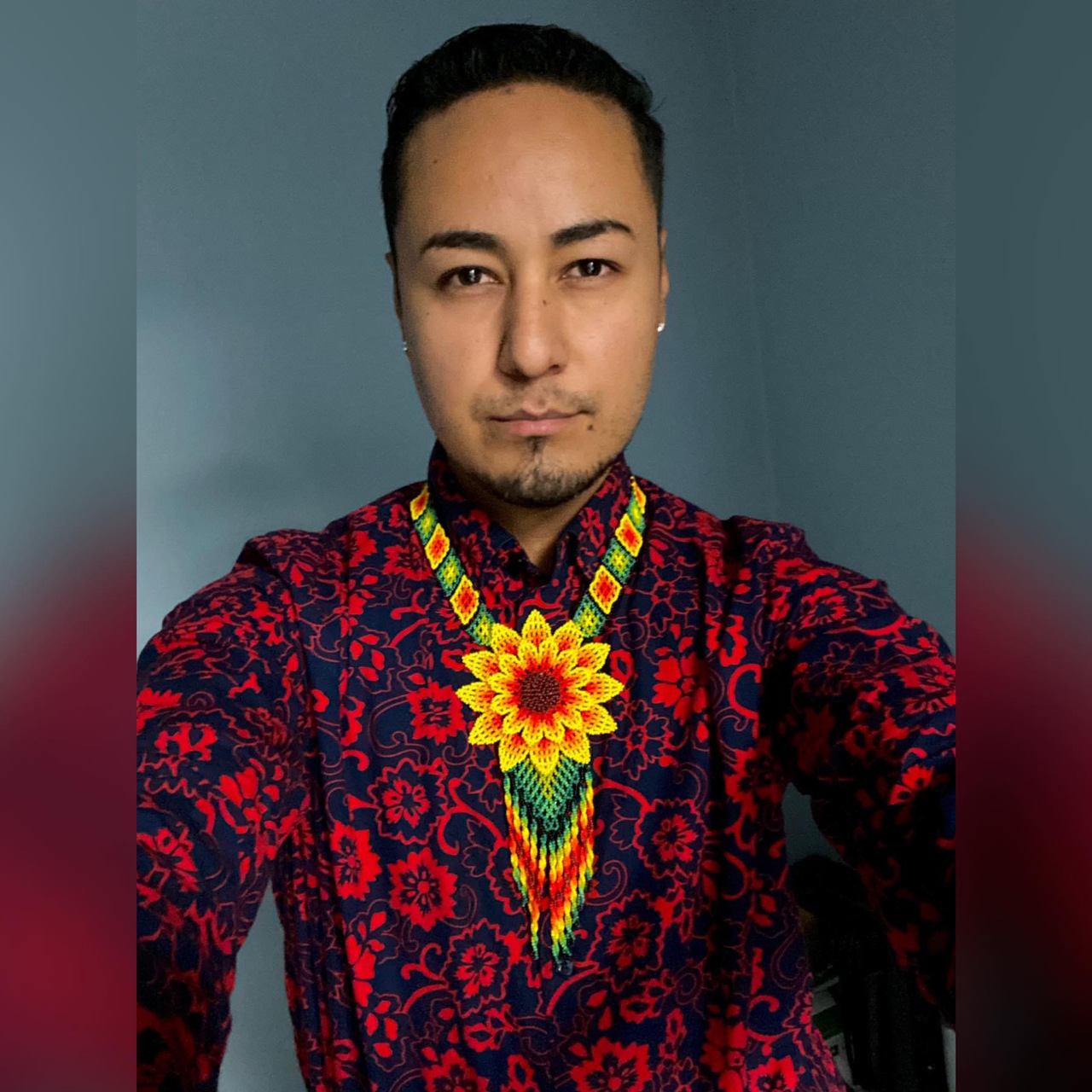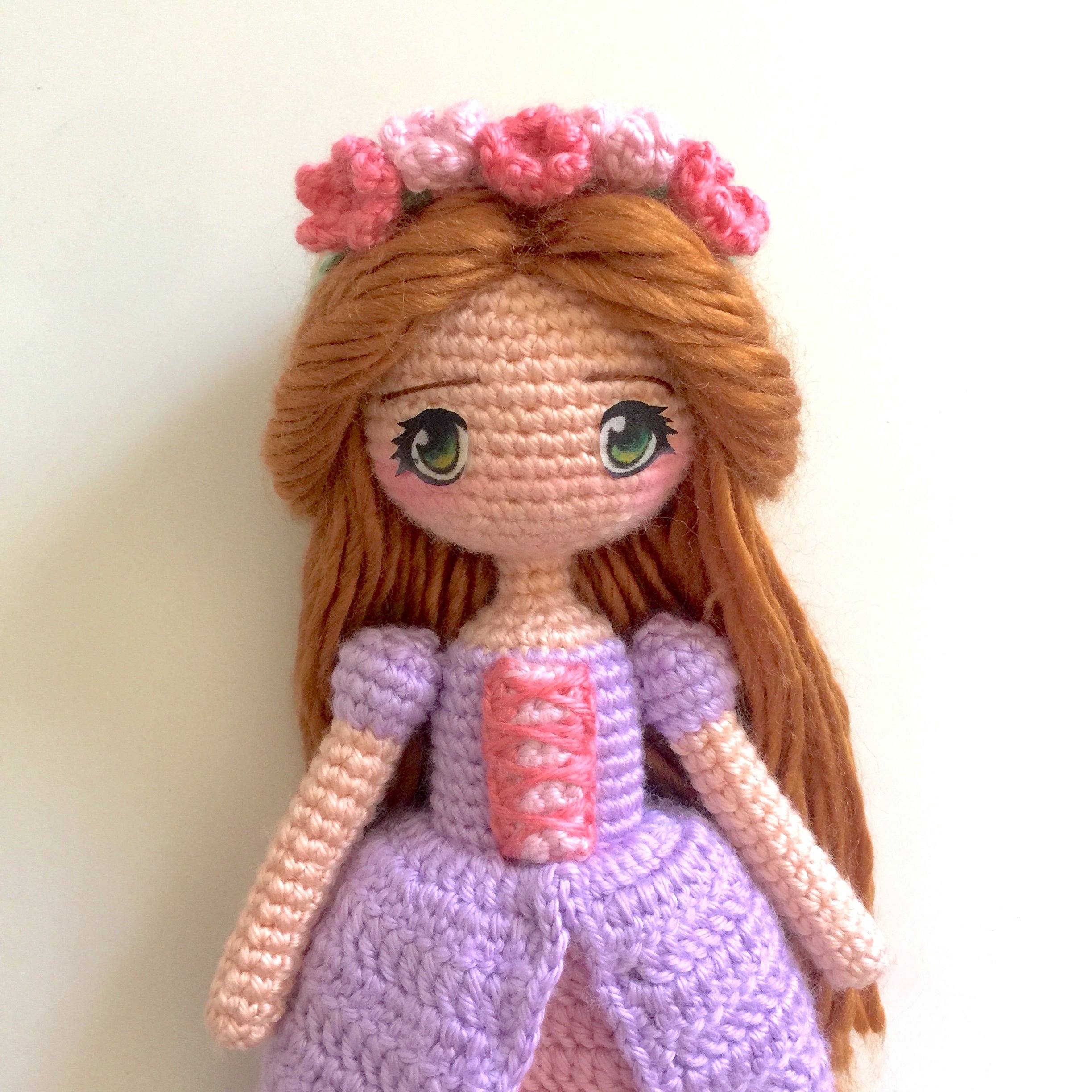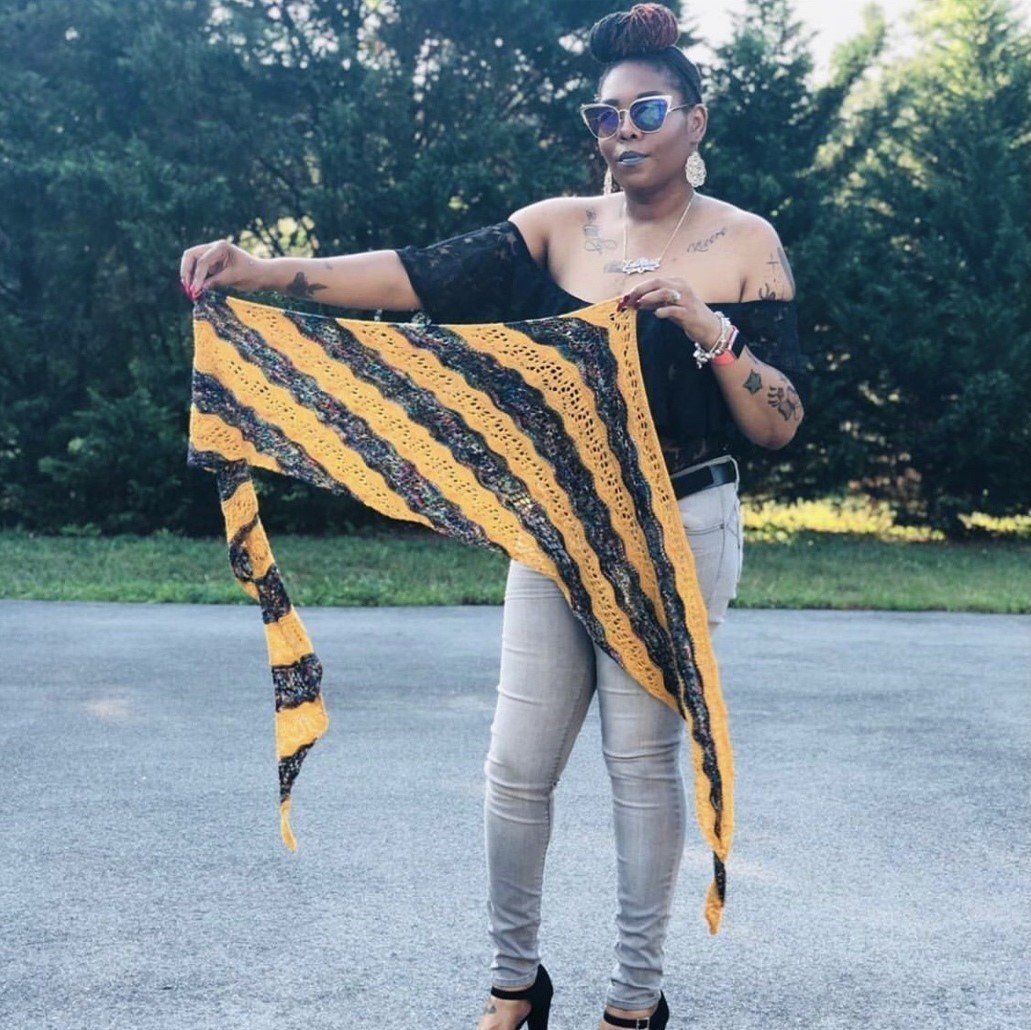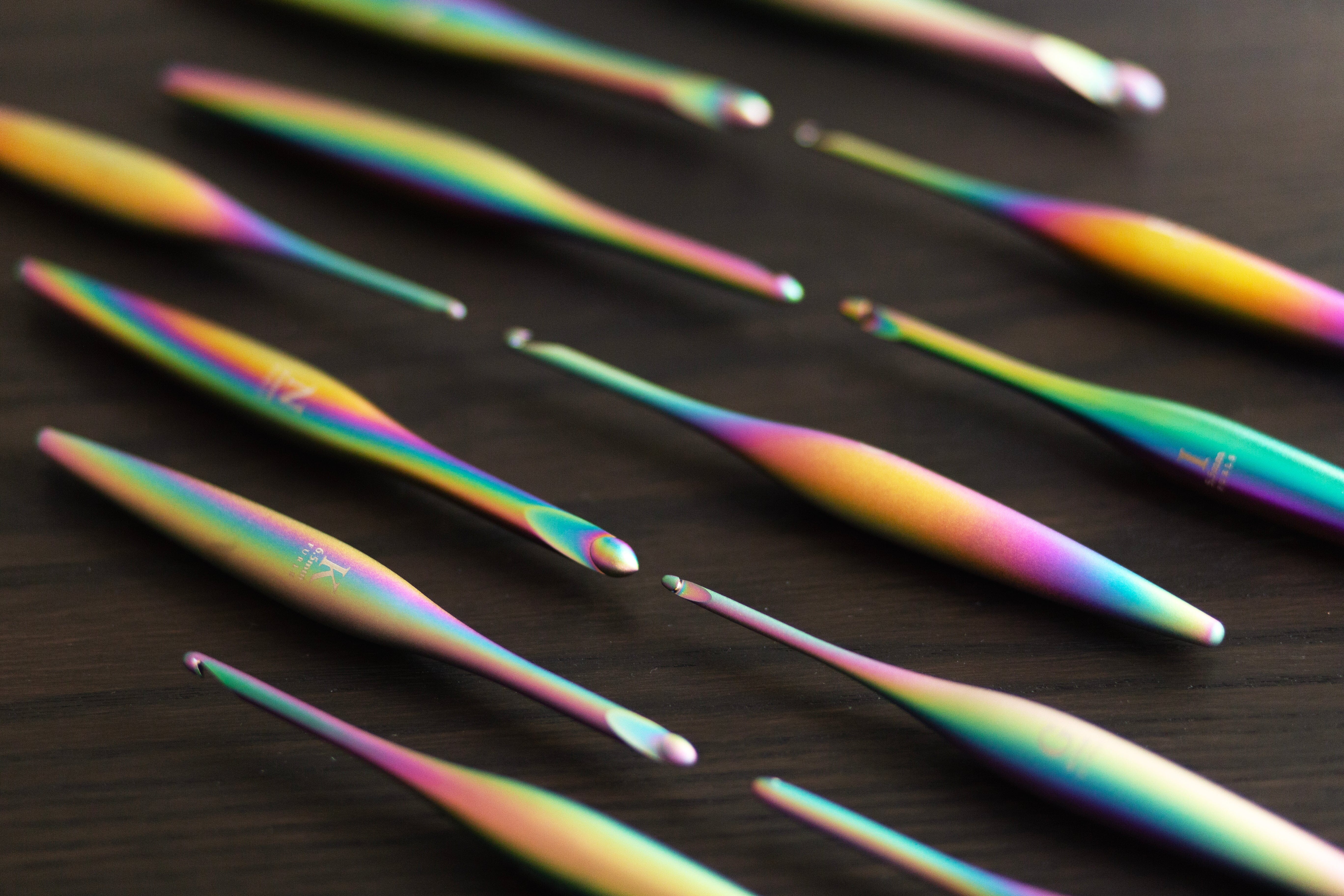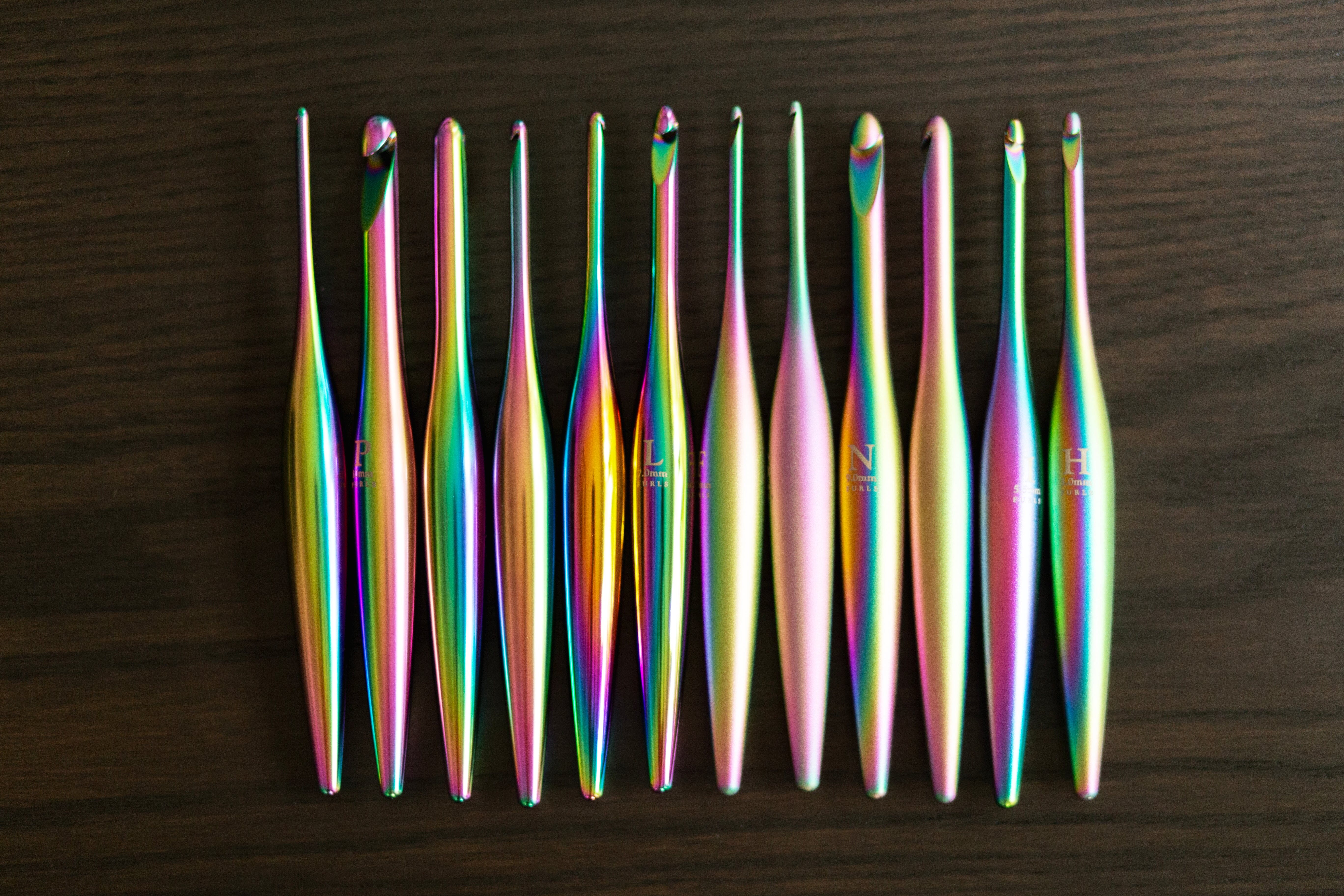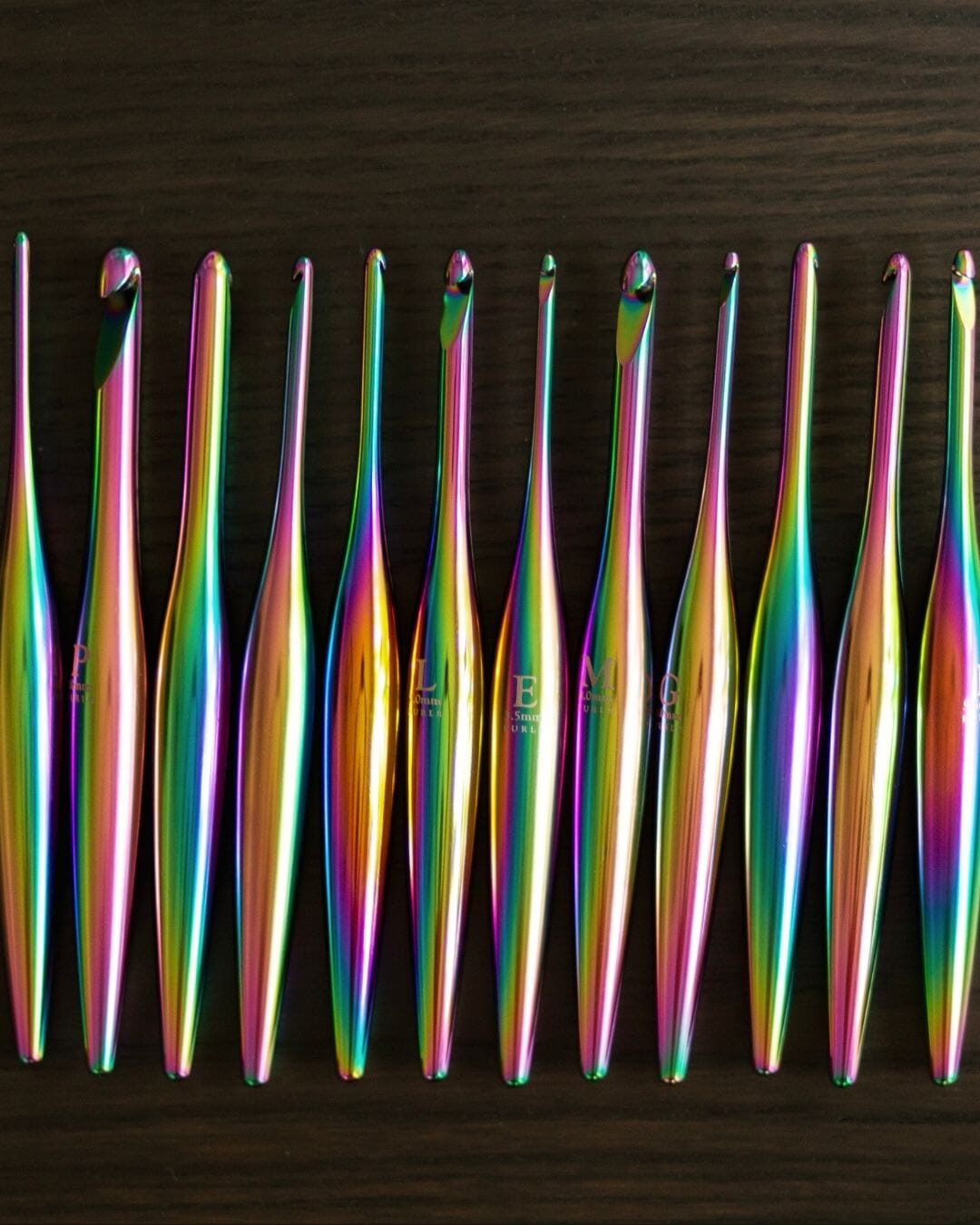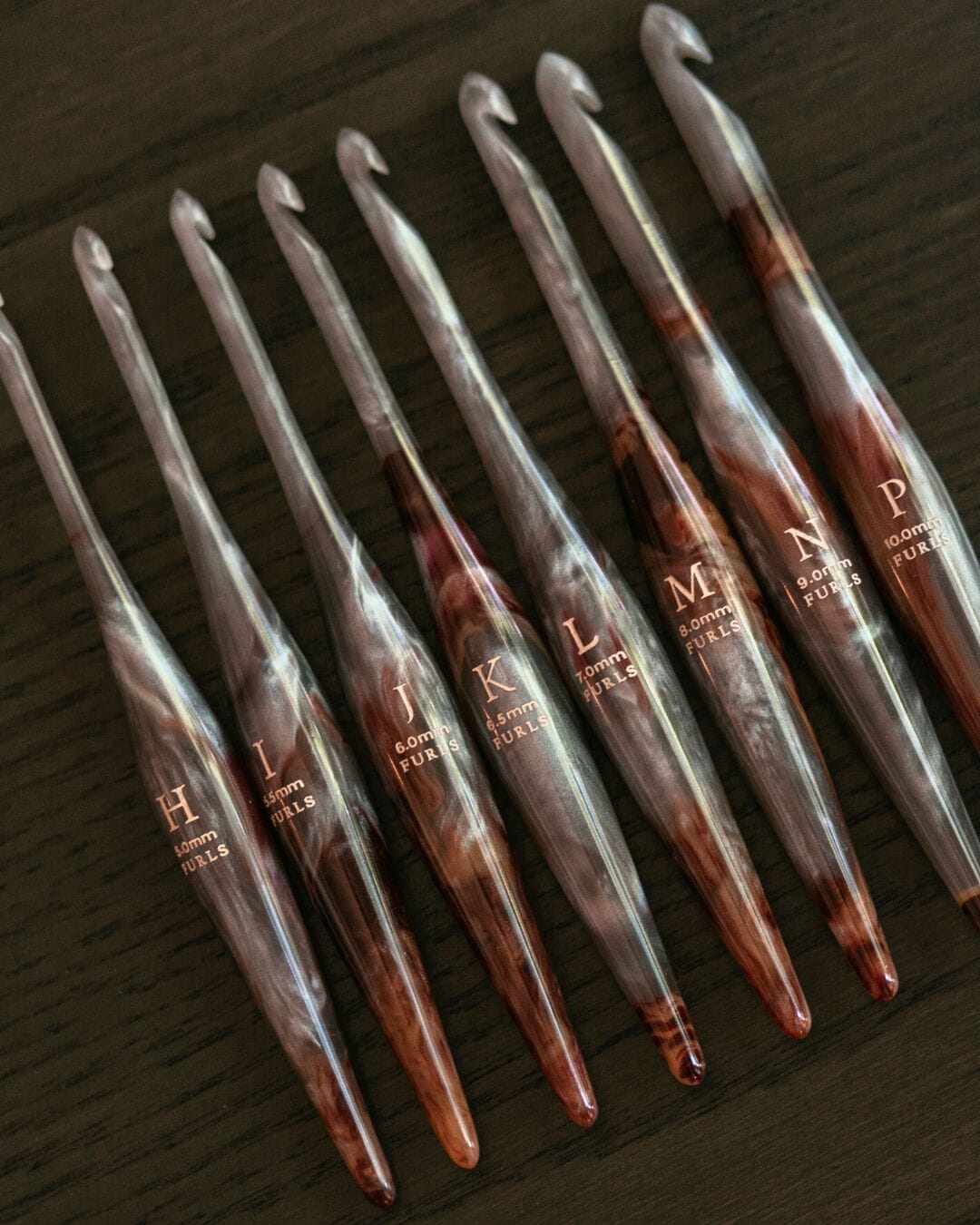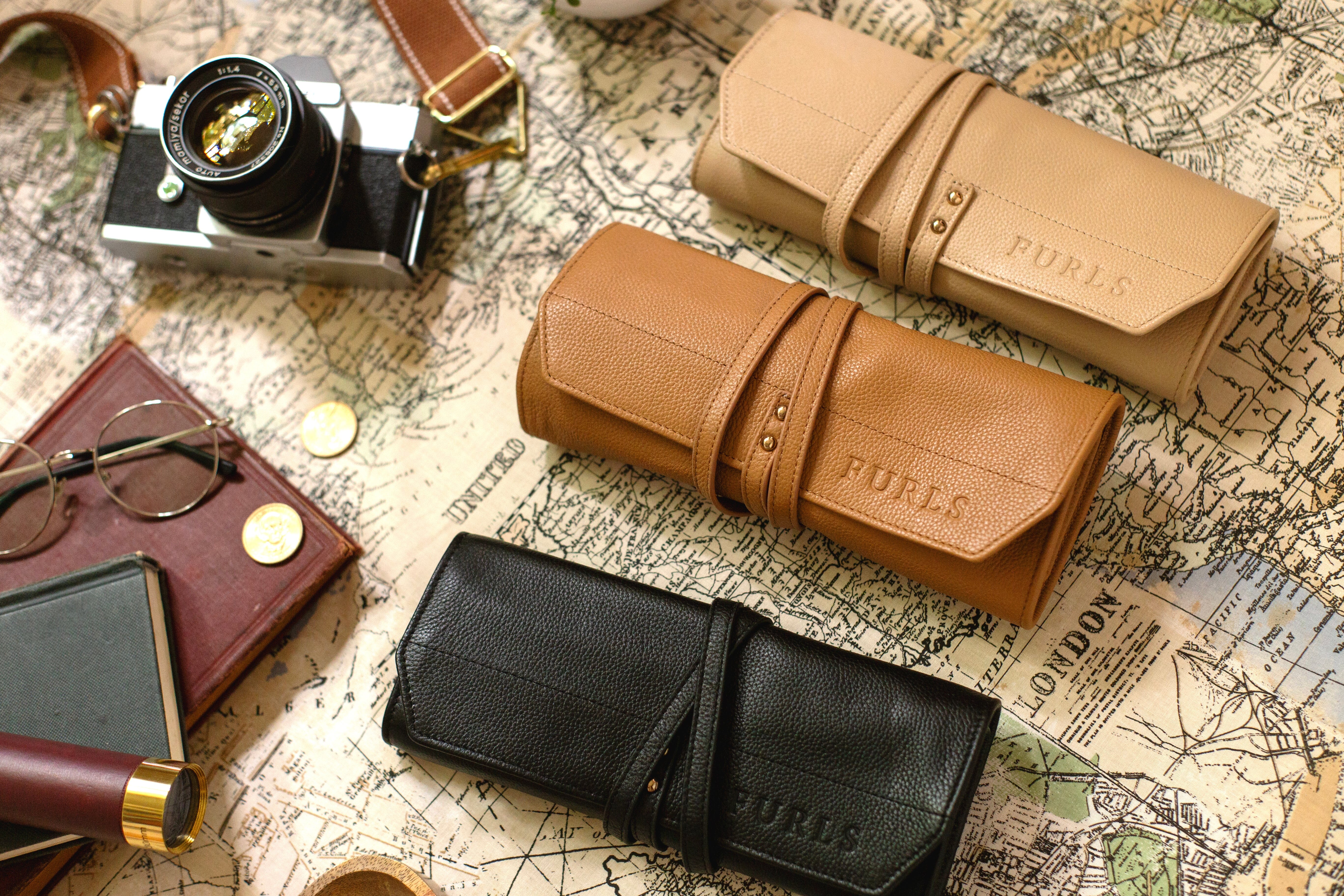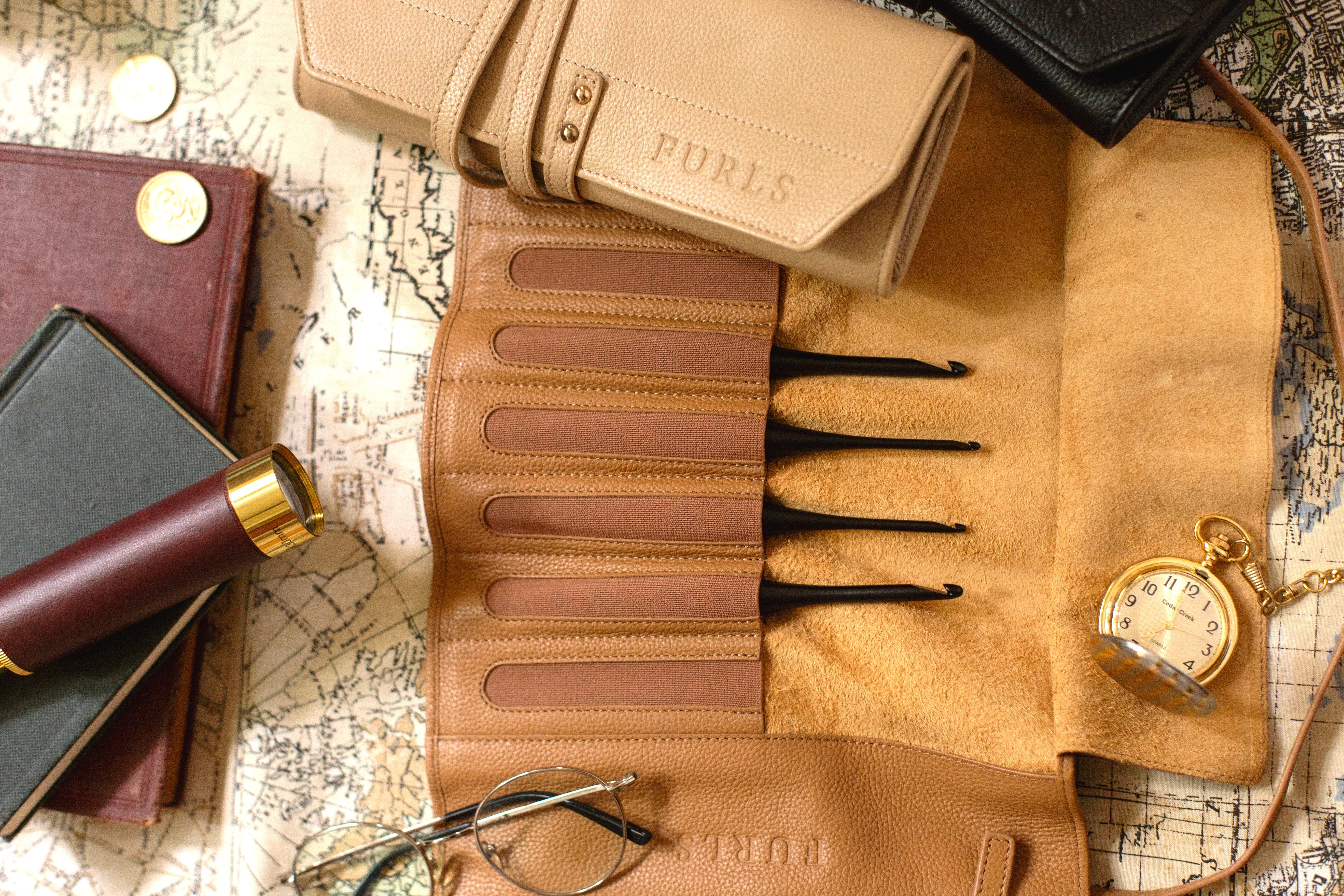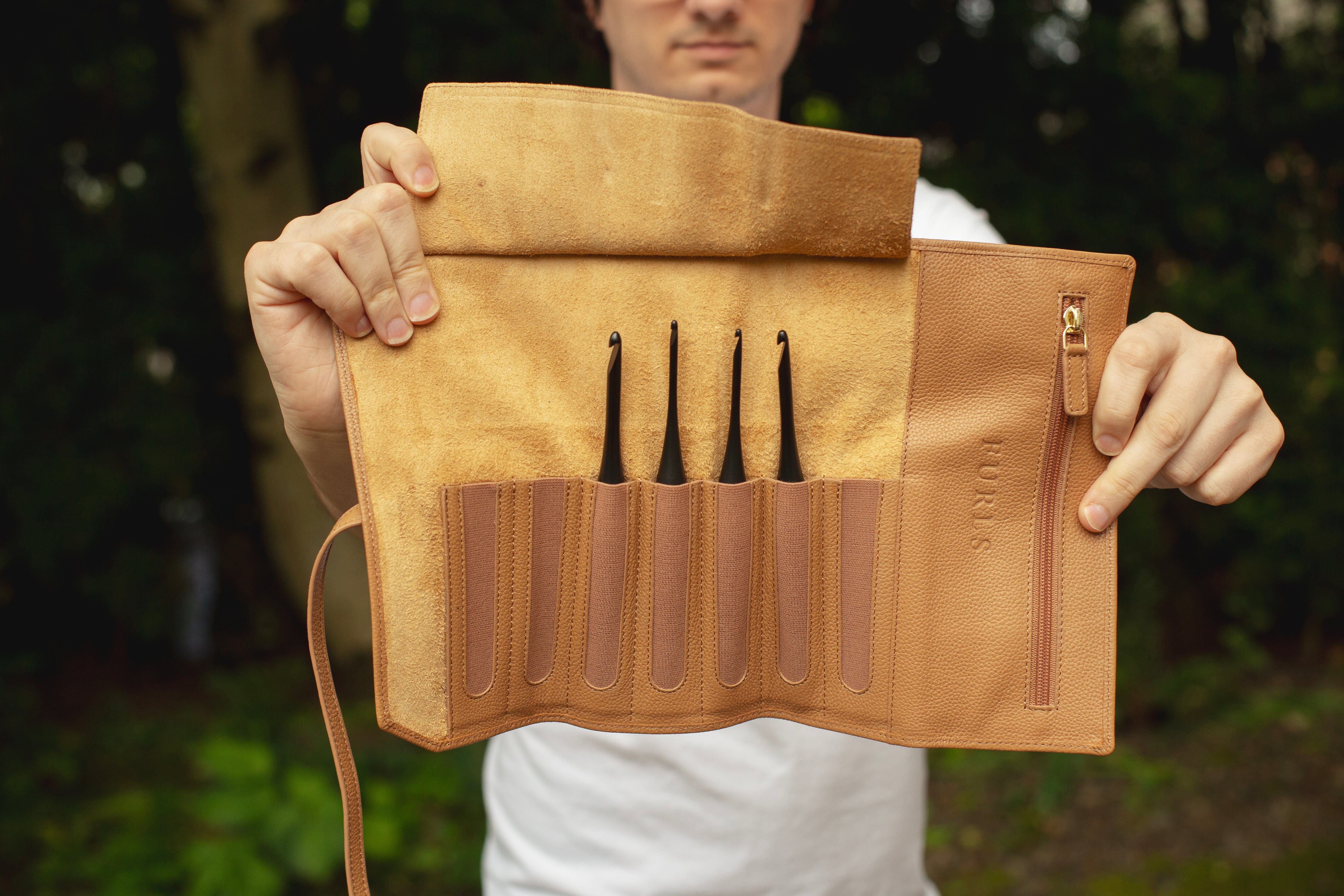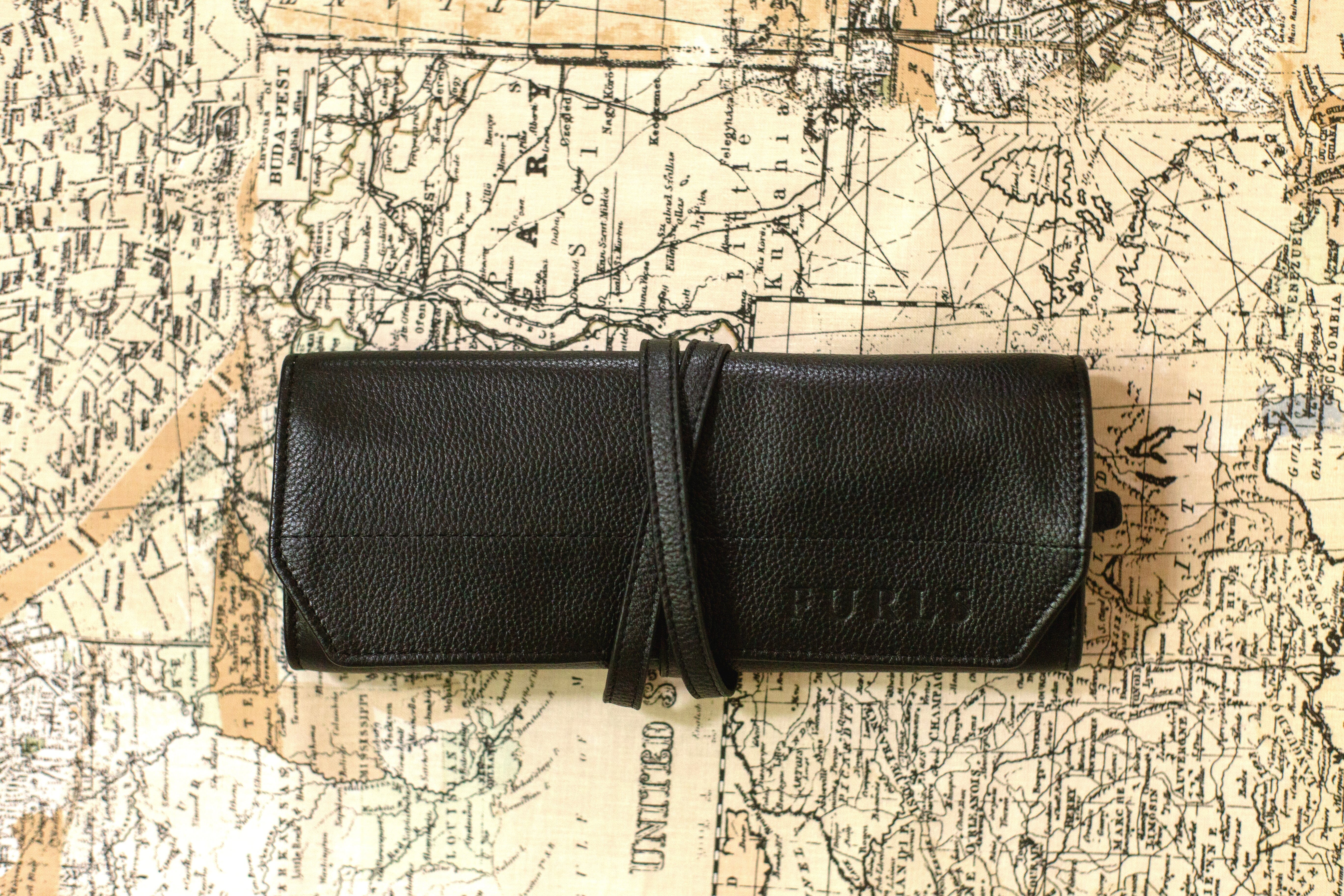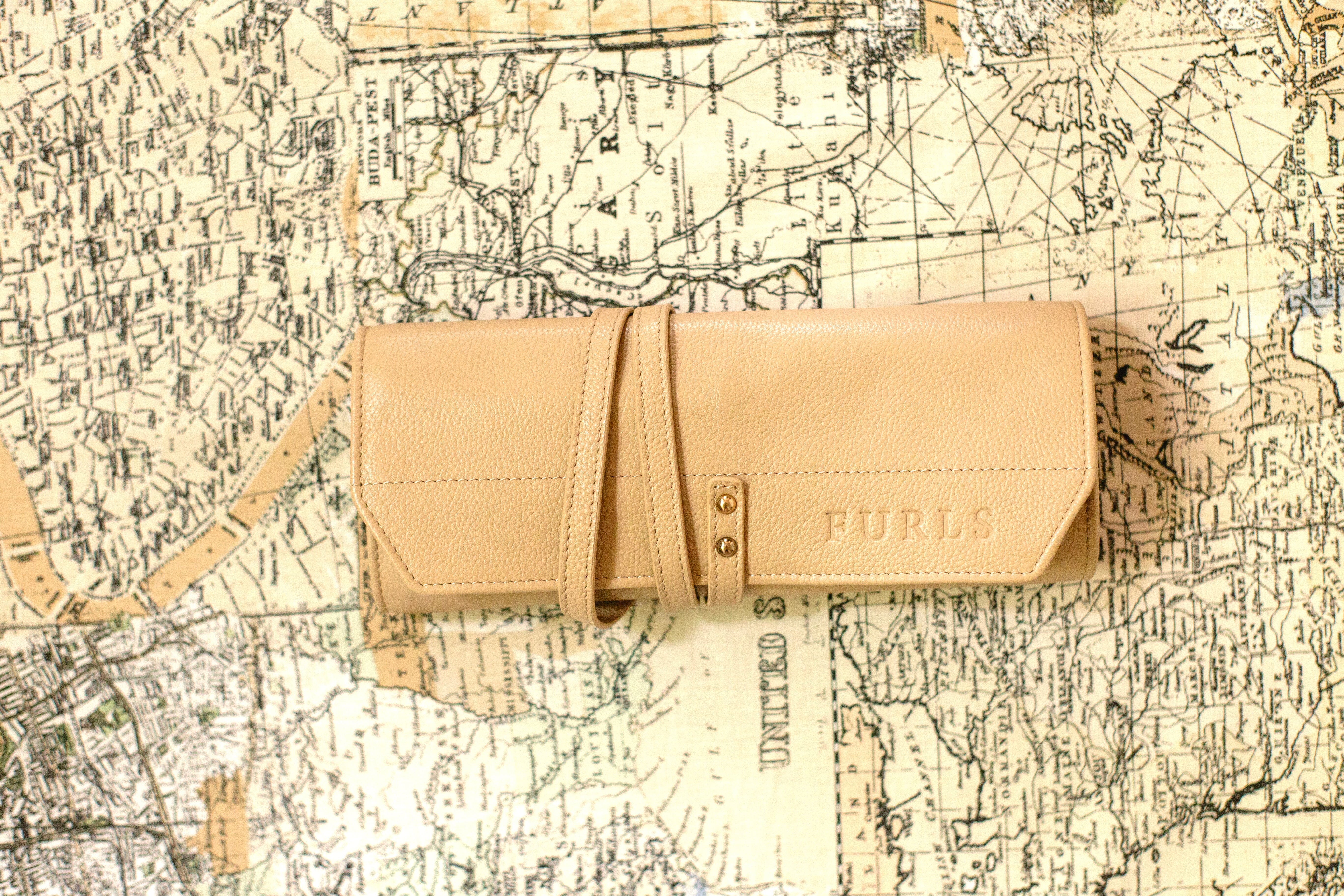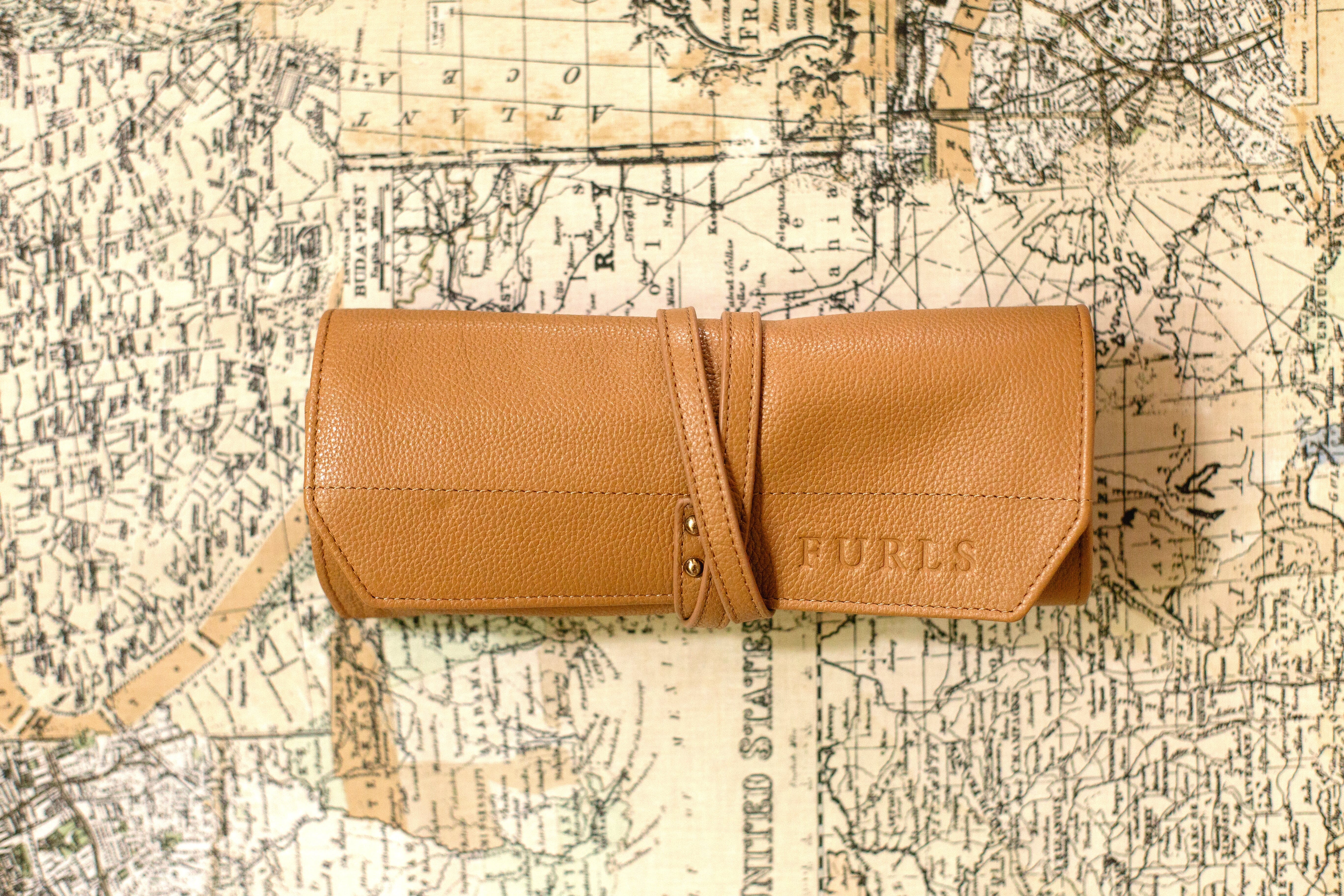Hello Friends,
We are still celebrating Pride Month 2021! Have you missed any of the previous interviews or lives? Did you miss the release of the limited edition Streamline PRIDE hook ???? You don't want to miss out on my conversation with Mister Domestic, or Schuyler Ellers. Click the links and be inspired!
Today I have the honor of chatting with Paquiliztli a proud, passionate and colorful tapestry crochet artist.
Paquiliztli
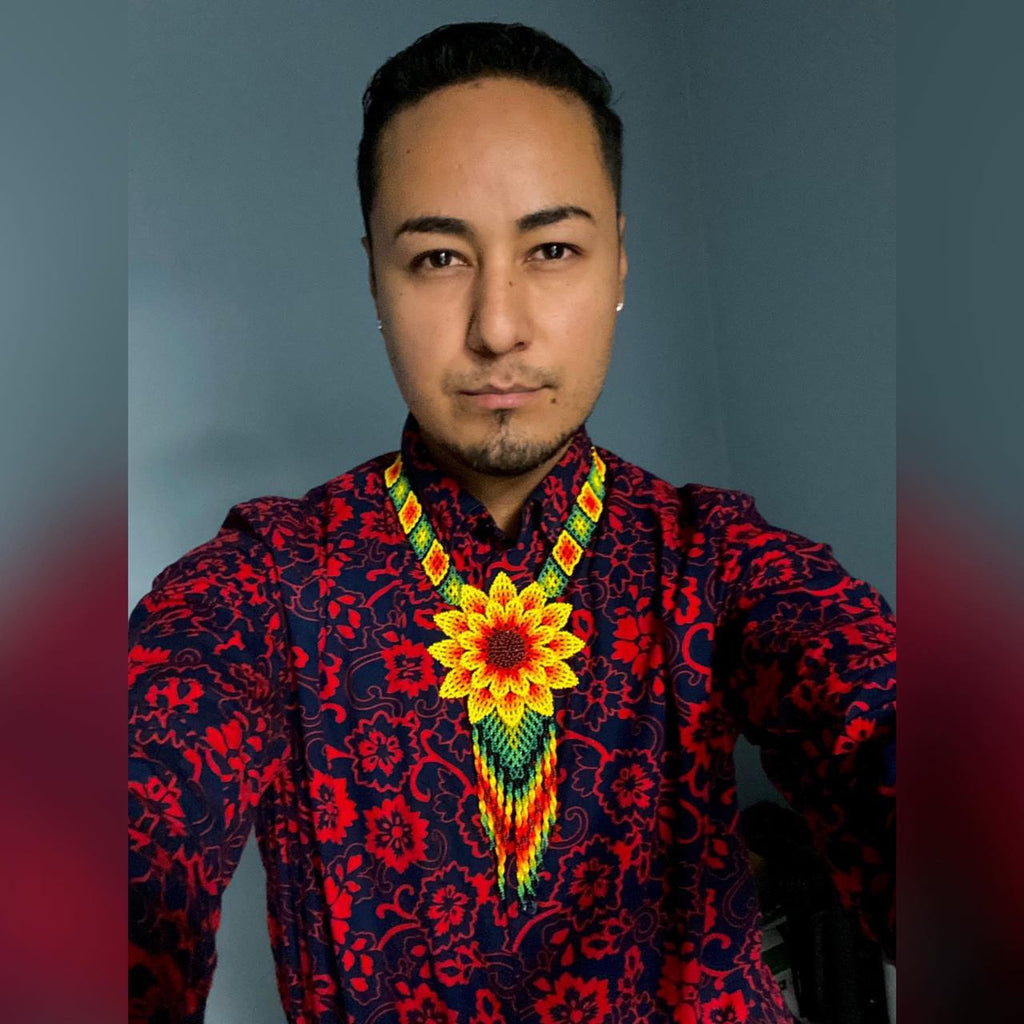
Inspired by the beauty of Mexican culture, A Paquiliztli creates happy, bright and colorful art with Tapestry Crochet.
Born in Mexico but raised in the Southern California, A Paquiliztli has always had a passion for learning about diverse topics such as Nahuatl, astronomy, pharmacology, crafts etc. He has a Biochemistry degree and a Doctorate of Pharmacy. He currently works as a pharmacist who dispenses HIV and PrEP medication and on his free time he create art pieces with tapestry crochet and teach a Nahuatl language course online.
A Paquiliztli's passion for crochet came from a life-long passion for learning crafts. He started crocheting in 2010, when his mother saw him knitting and decided to teach him how to crochet. A Paquiliztli then searched more information on crochet through books and videos. Through experimentation, he has created his own techniques with tapestry crochet that allow him to create works of art. "I love tapestry crochet because I can materialize my creative visions and show people a different perspective of crochet."
Mrs. Deveter: Thank you so much for taking time out to chat with me today! Let’s get into it! Crochet and knitting have for a very long time been seen as something older (White) women have done. Recently (thanks to social media) we have become aware of the emergence of men, multi-ethnic, and much younger people embracing fiber arts. Why did you learn to crochet?
Paquiliztli: When most people find out that I crochet they are generally surprised precisely for that reason. Since I am a man, Mexican and younger, they are surprised that I would crochet. I generally don’t follow societal expectations and instead follow my passions. I have a life-long passion for creativity. When I was younger, I would go to the library to learn how to draw, make origami, knit etc.
I learned to crochet because I was knitting one day and my mom decided to teach me how to crochet. That day I realized that crochet had so much potential and was so flexible. I became really curious and went to the library to learn more about the craft. I found books and YouTube videos that taught me how to incorporate multiple colors. I had always wanted to recreate pictures with yarn. I had previously tried to create images with tapestry weaving and was unsuccessful. However, with tapestry crochet I found a technique that was relaxing, addictive but also allowed me to create picture with any number of colors. Through lots of experimentation, I found my own method of recreating my creative visions with crochet.
Mrs. Deveter: I believe that most crochet artist love the craft because it’s SO versatile! I mean so is knit but with all the different stitches in crochet it’s more flexible. I didn't say it at the beginning of our chat - Happy Pride Month Paquiliztli! Queer activism through the visual arts is nothing new but over the past decade, there have been quite a few emerging queer artists working in fiber. I was recently introduced to the term “craftivism”, Would you consider yourself a craftivist? If so, what does that mean to you?
Paquiliztli: I do consider myself a craftivist, although my work currently does not focus on LGBT issues. I am proud of my LGBT identity and plan on incorporating some of these messages in future work. I have one piece in the works that will showcase this. My craftivism instead focuses on shedding a positive light on indigenous Mexican culture. Currently, in Mexican society, there is a stigma with having an indigenous identity. Through the beauty of my pieces I want to show the beauty in indigenous Mexican culture. This is why the garments that I have crocheted are inspired by indigenous garments. These include the Quechquemitl, which are ponchos that are worn by indigenous women, and Tilmahtli, which are capes worn by Aztec nobility in the 1500s. Because I am LGBT and don’t always follow gender roles, I model both the male and female garments. In that sense there is an element of queer craftivism. The very fact that I am a man engaged in a traditionally feminine craft is in an of itself a type of queer activism. My crochet is a form of craftivism since my main focus is showing the world the beauty of indigenous culture.

Mrs. Deveter: Wow. I love learning new things. Your pieces are so intricate and beautiful. I love that they represent indigenous culture. How would you describe your style?
Paquiliztli: My style is bright, colorful and conveys a message of happiness, beauty and empowerment. I incorporate complementing colors that express the feeling or idea of the piece.
Mrs. Deveter: And that they are! Absolutely magnificent. Are there any fiber artists that you particularly look up to?
Paquiliztli: Carol Ventura, who was a pioneer in tapestry crochet is someone I admire. She made game-changing breakthroughs in the technique of tapestry crochet. Her technique inspired my technique and it is the reason why I am able to create my crochet art pieces.
Mrs. Deveter: What sort of things are inspiring you right now? Where do you look for inspiration?
Paquiliztli: My inspiration primarily comes from Mexican indigenous culture. Traditional garments, pictures, historical figures, peoples or events have all been my inspiration. However, in truth, my inspiration can come from anywhere at any time. The best ideas can spontaneously manifest in my mind. The best art comes from choosing the best of that inspiration.

Mrs. Deveter: What five words would best describe you?
Paquiliztli: Intelligent, passionate, determined, practical, inspired
Mrs. Deveter: Finish the sentence … “If I couldn’t crochet or knit, I would … “
Paquiliztli:...be dissatisfied with life but then I would find a different outlet to channel my creativity such as painting, drawing or weaving. One way or the other my creativity would shine through. It cannot be contained.
Mrs. Deveter: What unexpected benefits have crocheting or knitting brought to your life?
Paquiliztli: When I started to crochet, I simply wanted to manifest my creative ideas and was not expecting all the positive recognition I have received from my peers, my family or the world. I didn’t expect that I would impress other people with my crochet. My expectation was simply to create beautiful pieces with a message. When I started posting my pieces online, people started calling me an artist, which was something I hadn’t recognized that I could be. I have now accepted that I am an artist and that realization has changed me as a person.
Mrs. Deveter: What is your favorite Furls tool?
Paquiliztli: I use the Furls Odyssey 2.25mm hook. It has a very comfortable sturdy grip and the small size allows me to crochet the intricate pieces I create with thin yarn.
Mrs. Deveter: I've recently starting do more Amigurumi and I also find that the Odyssey is the best hook for smaller intricate projects. What makes your work unique and special? What is the mission of your business/ art?
Paquiliztli: Multiple components of my work make it unique and special. I draw out my original pieces digitally and use my own a computer program to make recreate practically any image with crochet. My creations deviate from what most people expect crochet could create. When most people see my pieces they are wowed by the fact that crochet could create such intricate art pieces. Use my own tapestry crochet technique that I devised. My technique improves on other techniques because the color changes create crisp lines. I use lace-weight yarn with multiple colors such that creating one piece takes up to 5 months. My pieces have a message of happiness and empowerment my community. There are no other tapestry crochet artists that are creating pieces like mine which makes them original.

Mrs. Deveter: We live in a mass-produced, buy-it-now society. Why should people continue to make things by hand?
Paquiliztli: There is magic in getting a custom, one-of-a-kind piece made by an artist who has put a lot of thought into a piece. That kind of magic is not reproducible by a machine. That same magic is what art collectors seek to obtain when they buy a piece of art. Crochet is a type of art and that magic cannot be mass produced.
Mrs. Deveter: What a great answer. I love to think of artists as magicians we certainly do create magic and you do it so well with a hook and thin yarn! Thank you again for sharing with us!
Furls Fans I hope you learned something new in this interview with Paquiliztli and have been inspired by his story. Be sure to like, and follow him on social media!
Are you a maker or do you know a maker that should be featured? Apply here to be apart of the Furls Maker Stories!


